Script and Textual Contents
Description and Contents
The text on the reverse of the initials is in Latin, written in the rounded Italian type of Gothic bookhand (textualis).
Marlay cutting It. 13A: the initial S opened the Introit to the Mass for the feast of the Purification of the Virgin (2 February), beginning Suscepimus Deus misericordiam, originally on fol. 42 in Corale 2 (a Gradual). The Macro-XRF scan of the reverse reveals the fragmentary rubric, In purifi[catione] b[ea]tissime virgi[nis] Marie. cum can[delae] ceperint dari. In[tr]at cantor
MS 5-1979: the initial D opened the Introit to the Mass for the feast of St Clement (23 November), beginning Dicit dominus sermones mei, originally on fol. 159 in Corale 2 (a Gradual)
Marlay cutting It. 13.i: the initial L opened the responsory for the first lesson of Matins for the feast of St Laurence (10 August), beginning Levita Laurentius bonum operatus, originally on fol. 62 in Corale 19 (an Antiphoner). The fragmentary text on the reverse is from the versicle for the third lesson of the first nocturn at Matins for the feast of St Laurence, [Mea nox obscurum non habet, sed omnia in luce cl]arescunt. B[eate Laurenti martyr Christi intercede pro nobis.] In se[cundo nocturne]
Marlay cutting It. 13.ii: the initial I may have opened the Introit to the Mass for Easter Monday, beginning Introduxit vos Dominus in terram fluentem lac et mel, originally on fol. 19 in Corale 3 (a Gradual) or in another, lost Gradual. The isolated letters and notes on the reverse do not allow for a firm identification
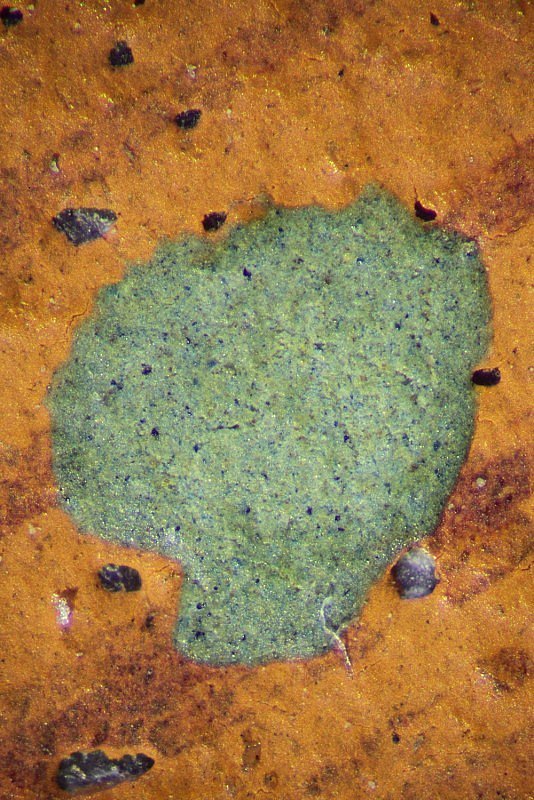
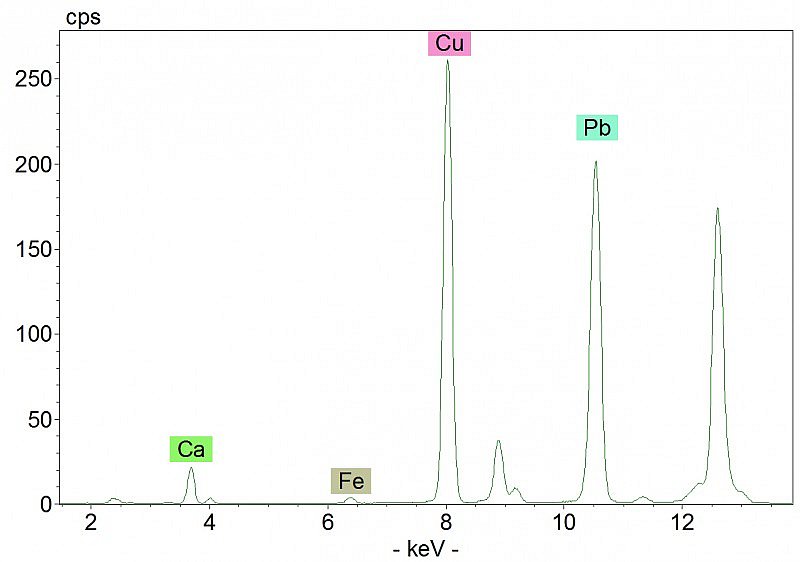
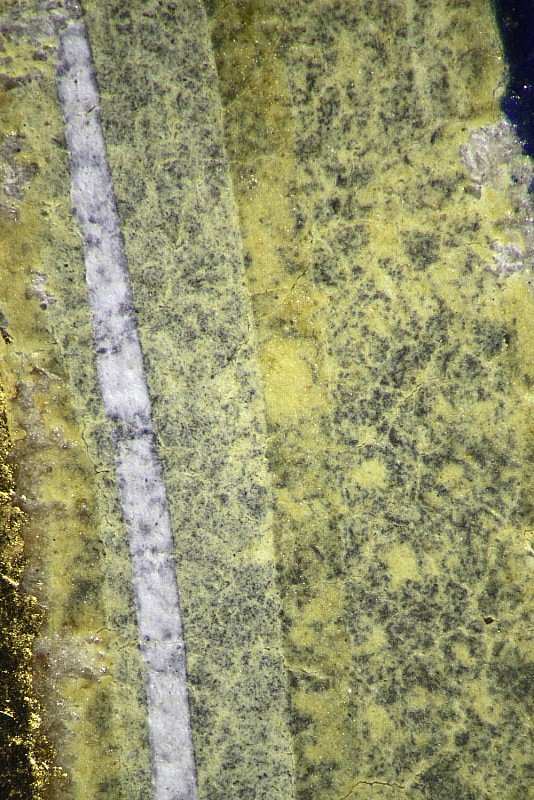
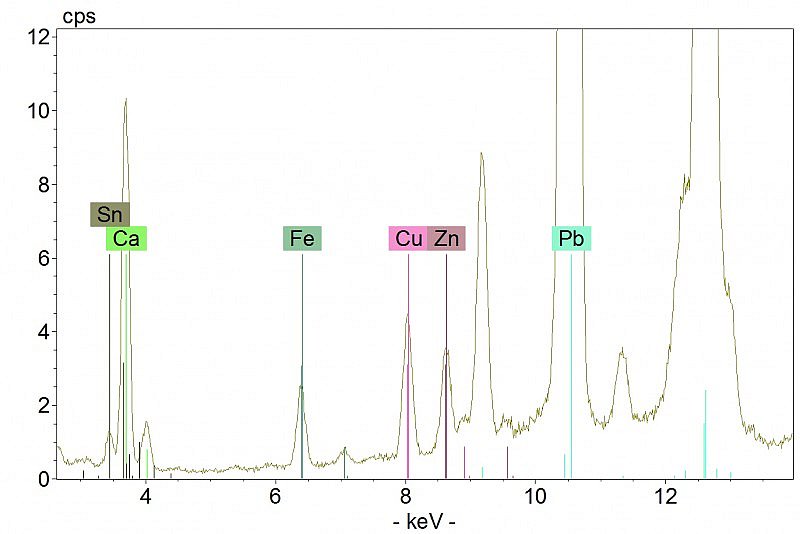
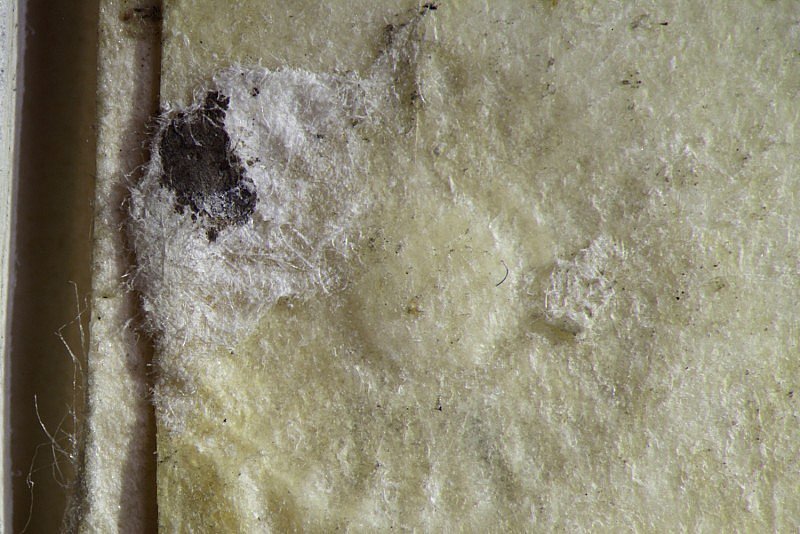
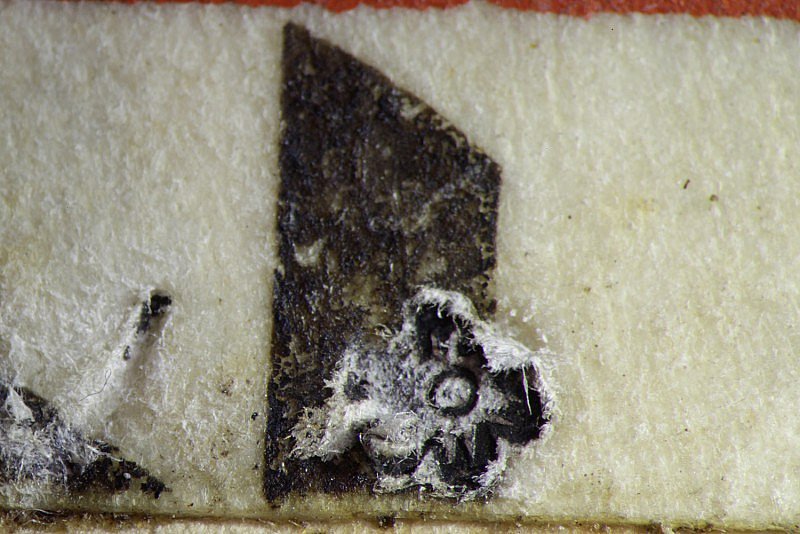
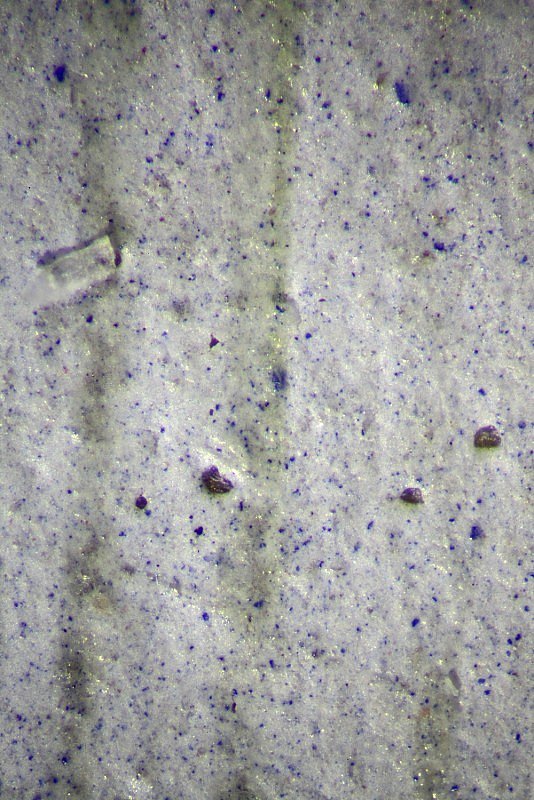
Detail of St Clement’s white robe under magnification (60x). Numerous blue particles can be seen and identified as ultramarine by a small peak at 539 cm<sup>-1</sup> in the Raman spectrum (below). The more intense peak at 1050 cmcm<sup>-1</sup> is characteristic of lead white.
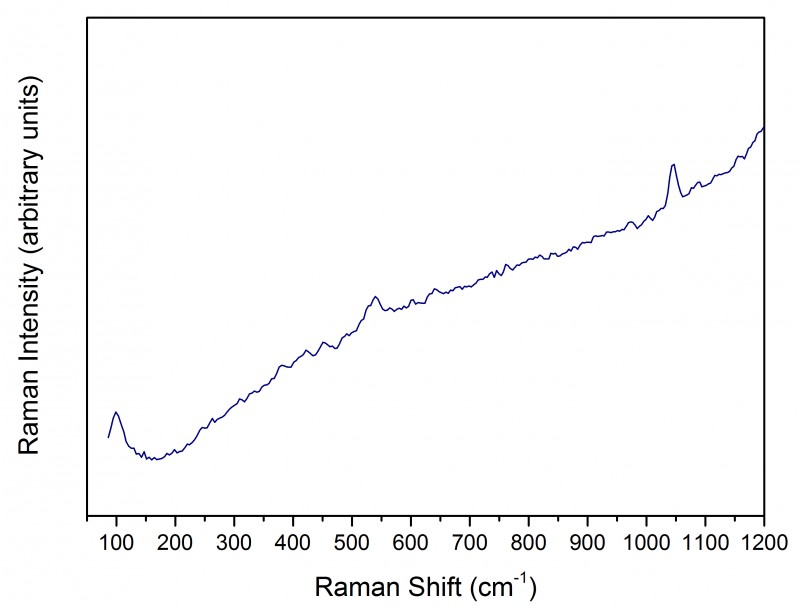
St Clement
Historiated initial D from a Gradual, 1370-1375
The initial D opened the Mass for St Clement’s feast (23 November) in Corale 2, a Gradual made in 1370-1375 and illuminated by Don Silvestro dei Gherarducci. The individualised physiognomy, emulating the facial types of Simone Martini and paralleled in works by his followers, demonstrates Don Silvestro’s familiarity with Sienese painting.
Typically Florentine, however, is the use of a mixture of blue and yellow to obtain green, while in Siena artists favoured the green copper mineral malachite. Here, azurite blue was probably mixed with a lead oxide yellow (hotspot 1). This same pigment was also used in the yellow highlights over the green leaves and in the book held by the Saint. The yellow initial, however, was painted with lead-tin yellow, as can be seen by selecting the elemental map for tin (Sn, layer ‘elemental map Sn’). The same map also shows that a small section of the blue mantle’s gilded border was painted with mosaic gold (tin sulphide), perhaps as an afterthought. Mosaic gold was also used for the small yellow dots which decorate the mantle, and for the shiny ornaments and leaf outlined in a dark red iron oxide pigment (Fe, layer ‘elemental map Fe’).
The pink leaves and the yellow initial, as well as the white highlights over the orange leaves and ornaments, have darkened significantly (hotspot 2). This is most likely linked to the presence of lead white. In the pink and yellow areas the discoloration appears to have started not on the surface but rather in the lower portion of the paint layers. If this is indeed the case, the degradation process may have been catalysed by the materials used to glue the fragment to its modern cardboard support.
Microscope images acquired in raking light provide evidence of the previous existence on the front side of the image of a brown cardboard mat, stamped with flowers and other decorative elements, similar to the one still visible around the Presentation in the Temple. The impressions left by these flowers are still visible especially along the lower edge of the fragment (hotspots 3 and 4).
Related content: Initials from Choir Books
- Artists: Don Silvestro dei Gherarducci (1339-1399)
- Texts and Images: St Clement
- Description and Contents: Physical Description
- Description and Contents: Script and Textual Contents
- Artists' Materials: Differences in palette
- Artists' Materials: Selective use of egg yolk binder
- Artists' Techniques: Gold tooling
- Artists' Techniques: Painting the flesh
